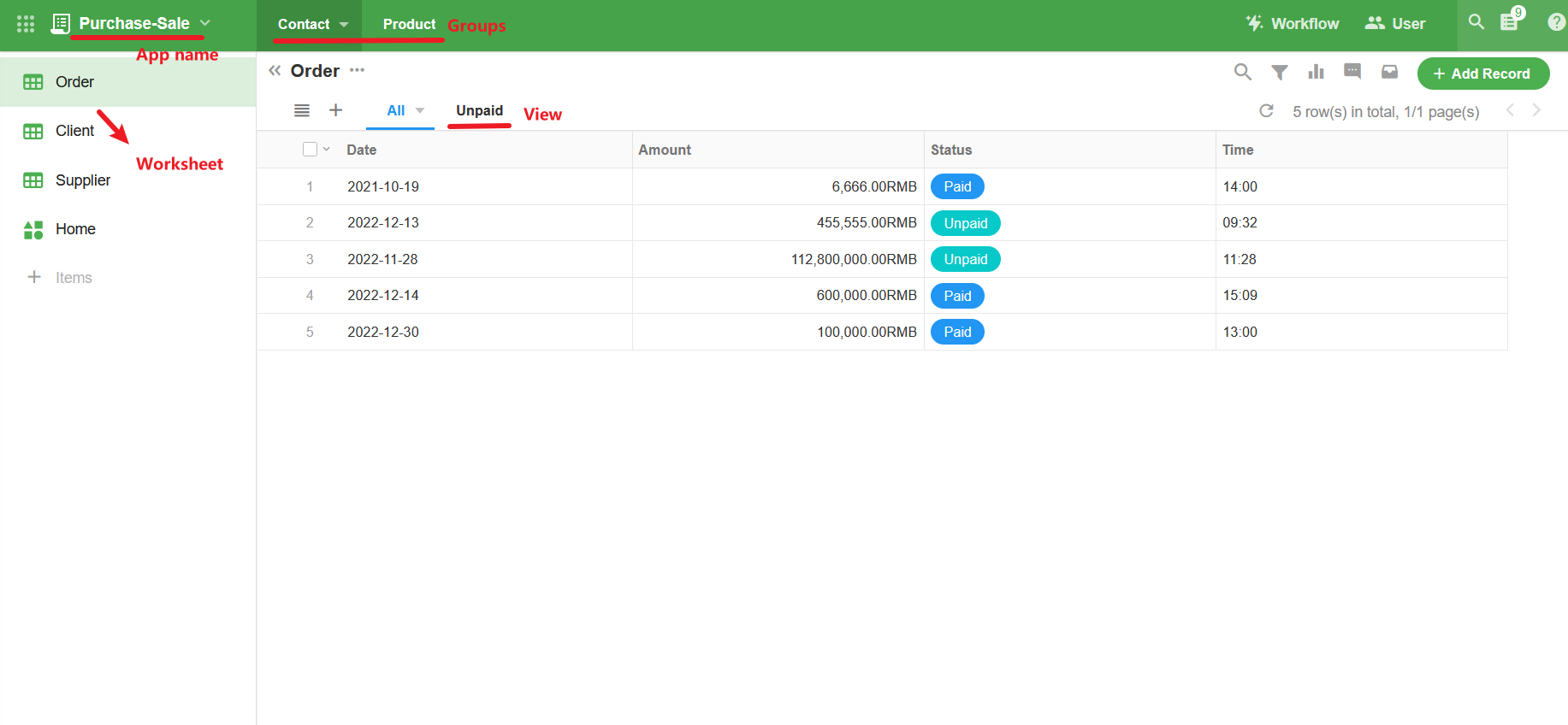How to plan and design an application
Users can create various custom applications in HAP, and can only invite colleagues in need to join the applications. A reasonable plan and design before application building will help to present the features and data of the application clearly, which can better guide users.
Below is a screenshot of an application. [Purchase-Sale] in the upper left corner is the application name; groups are at the top; worksheets are displayed on the left side; there can be multiple views in a worksheet to display filtered data according to business scenarios and roles.

Plan an Application
The following shows you how to plan and design an application.

Enterprise Function ➡️ Application
No matter what problem you are trying to solve, it belongs to an enterprise function, so it is recommended that you take the function as the managing scope of the application.
Enterprise functions include research and development, production, operations, sales, marketing, finance, HR, etc. You can also take more specific functions as the managing scope of applications, such as purchasing, logistics, etc. Building applications by enterprise function can control the number of applications and make them easily recognizable to users.
Business Function ➡️ Group
Next, you can sort out the business that needs to be managed under the selected enterprise function, such as order management, and set up corresponding groups according to the management requirements of the business.
Although business function is abstract, it is a subset of enterprise functions, so generally it can be easily identified. For example, in the table above, you can set a group Order Management in the application Sales Management.
Business Data ➡️ Worksheet
You can add business data directly, that is, to create worksheets under groups in the application. Worksheets can be named according to business objects, such as Order, Customer, Purchase Order, etc.
Filtered Data ➡️ View
In worksheets, you can create views to present data with different statuses, such as a view for unpaid orders, a view for closed orders, etc. Views can be assigned to different roles in the application.
A well-built application is not unchangeable . Later you can continue to add objects to it such as adding worksheets.